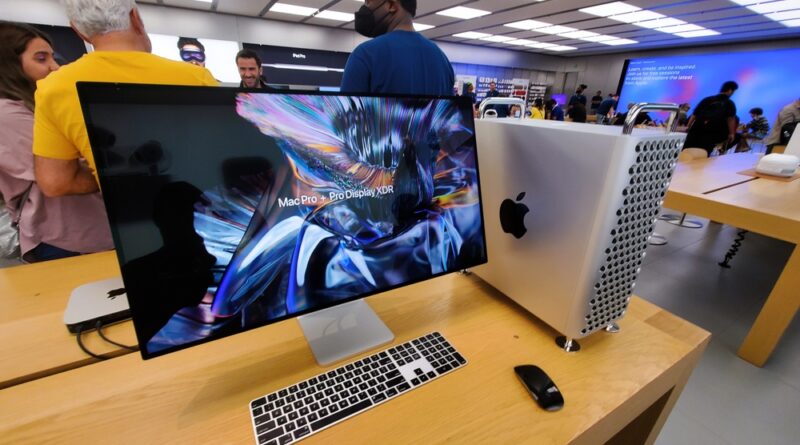Apple Bets on Generative AI to Reinvent the Way It Builds Chips, and Keep Ahead of Silicon Valley’s Performance Race
When Apple unveiled the A4 processor in 2010, the company set a precedent that would eventually replace the word “iPhone” with “custom silicon” as the tech giant’s most formidable competitive edge. Fifteen years later, Cupertino is preparing for another leap—this time by turning generative artificial intelligence inward, from flashy end-user tricks to the esoteric realm of chip layout and transistor placement.
From AI as Feature to AI as Factory
Apple’s hardware chief Johny Srouji recently told an audience at Belgian research institute Imec that generative-AI techniques could “get more design work done in less time” and serve as a “huge productivity boost.” In other words, while rivals chase AI chatbots and photo filters, Apple plans to let AI draft the blueprints for the next A-series, M-series and, potentially, modem chips.
The company is partnering with electronic design automation (EDA) heavyweights Cadence and Synopsys—firms already experimenting with large language models that propose circuit optimizations, predict thermal bottlenecks and auto-route billions of transistors with fewer human tweaks. By folding those capabilities into Apple’s famously tight hardware–software co-design loop, Srouji hopes to shorten development cycles and unlock architectures too complex for traditional CAD tools.
Why Chip Design Is the Ultimate AI Use-Case
Chip floor-planning is a gargantuan puzzle: engineers juggle power grids, signal integrity, heat dissipation and timing constraints across tens of billions of nanoscale components. A single revision can take weeks of simulation. Generative AI promises to treat each constraint as a parameter in a reinforcement-learning model that iterates thousands of schemes overnight—then ranks the top candidates for human review.
That could translate to:
-
Higher peak performance: More efficient layouts reduce wire length and latency.
-
Lower power draw: Smarter placement shrinks leakage pathways and cooling overhead.
-
Faster tape-out: Design loops collapse from months to days, letting Apple move to new process nodes sooner.
A Counterintuitive Strategy—Silicon Before Software
Apple faced criticism at WWDC 2025 for the absence of a “Personalized Siri” rollout and only modest AI features in iOS 26. Srouji’s comments reveal the counter-narrative: Apple is investing first where AI yields structural advantage, not marketing sizzle. By embedding generative models into the silicon pipeline, the company hopes to secure gains that ripple across the entire product stack—Macs, iPads, VisionPro headsets and the coming wave of on-device AI frameworks.
Lessons From the Apple Silicon Gamble
Moving the Mac to Apple Silicon in 2020 proved Apple can upend incumbents (Intel, in that case) when it controls every layer, from instruction set to compiler. “There was no backup plan,” Srouji said—an admission that the M1 project demanded all-in commitment. The bet paid off: unified memory, massive power efficiency and unrivaled performance per watt. Generative-AI-driven design may be the next such gamble, aimed at breaking through the plateau many experts believe looms for classical “bigger-is-better” scaling.
Challenges Ahead
-
Data confidentiality: Feeding proprietary RTL code into third-party AI tools requires encryption, air-gapped clusters and iron-clad IP clauses.
-
Toolchain maturity: EDA vendors are still validating LLM-generated layouts for lithography-induced variation, electro-migration and security side-channels.
-
Talent reshuffle: Apple’s silicon team must blend traditional chip architects with ML researchers, roles rarely cross-pollinated at this scale.
The Competitive Landscape
NVIDIA already uses AI to optimize GPU placement; Google’s DeepMind published automated floor-planning research for its next-gen Tensor Processing Units. AMD and Intel tout AI-assisted power modeling. Apple’s differentiator could be its vertical integration and war-chest of anonymized design data spanning iPhone, Mac, Watch and VisionPro chips—fuel that open-source LLMs can’t match.
What Success Looks Like
If generative AI can shave even 10 percent off circuit complexity or boost yield on bleeding-edge 2-nanometer nodes, Apple could widen its performance-per-watt gap just as battery-hungry on-device AI workloads proliferate. For consumers, that could mean iPhones with Neural Engines fast enough to run large language models offline, Macs rivaling high-end desktops at a fraction of the power, and AR/VR headsets without tethered battery packs.
The Takeaway
Apple’s pivot from AI as a user-facing feature to AI as a design supertool signals a maturing industry: gimmicks make headlines, but foundational efficiency wins decades. If Srouji’s team pulls off an AI-accelerated chip pipeline, the next “one-more-thing” may not be a product demo at all—it might be the invisible silicon heartbeat that powers every device Apple ships in the 2030s.
Photo Credit: DepositPhotos.com

